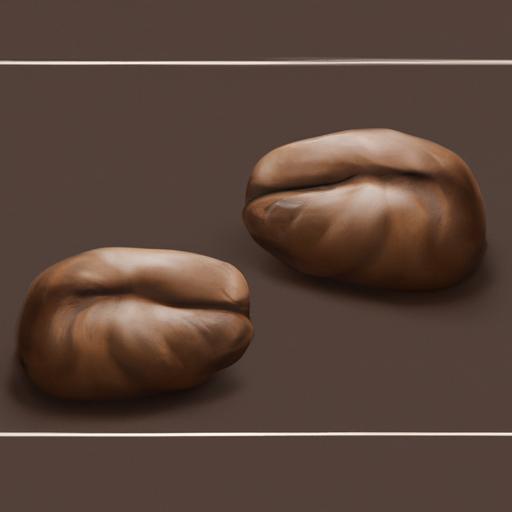We all love coffee and many of us can’t start the day without it.
But have you ever stopped to think about the origin of coffee? Are coffee beans really seeds? Many of us have heard the myth that coffee beans are seeds, but is it true? In this article, we will explore the truth behind this myth, as well as look at what coffee beans are, the coffee plant, the coffee cherry, processing, roasting, and ground coffee beans.
Buckle up and let’s explore the fascinating world of coffee beans!.
Table of Contents
Short Answer
Yes, coffee beans are actually seeds.
The coffee plant produces a fruit called a cherry, which contains two seeds inside.
After the cherry is harvested, the seeds are removed and dried, then roasted and ground to make the familiar coffee beverage.
The beans are the seeds of the coffee plant, and they are what gives coffee its distinctive flavor.
What Are Coffee Beans?
Coffee beans are the seeds of the coffee plant, also known as Coffea.
These beans are found inside the red or purple fruit of the coffee plant, known as a coffee cherry.
When the fruit is ripe, it is picked, processed and dried.
Afterward, the dried fruit is hulled to remove the outer layers, which exposes the inner beans.
These beans are known as coffee beans and can be roasted and ground to make the familiar beverage.
Coffee beans come in two main varieties; Arabica and Robusta.
Arabica is the more popular variety, as it has a smoother, more balanced flavor and is less bitter than Robusta.
Robusta beans are generally used in espresso blends and are more acidic and have more caffeine than Arabica beans.
In addition to the two main varieties of coffee beans, there are also hybrid varieties that are created by breeding Arabica and Robusta beans together.
These hybrids are generally more disease-resistant and produce a more consistent flavor than either one of the parent varieties.
Coffee beans can also come in a variety of different roasts, from light to dark.
The lightest roast is known as a blonde roast and has a milder and brighter flavor.
Darker roasts have a more intense and bold flavor and can have a smoky or even bitter taste.
The roasting process also affects the caffeine content of the beans, with darker roasts containing more caffeine than lighter roasts.
The flavor of the coffee beans also depends on where they are grown.
Coffee beans grown in different countries or regions will have different flavor profiles and characteristics.
For example, beans grown in Latin America tend to be sweeter and brighter in flavor, while beans grown in Africa tend to be more acidic and have a sharper taste.
No matter where the beans are grown or what variety they are, the truth remains that coffee beans are indeed seeds.
They are the key ingredient in the beverage we know and love, and the source of many enjoyable and stimulating moments.
The Coffee Plant

The coffee plant is a flowering evergreen shrub native to tropical and subtropical regions of the world.
It is grown for its coffee beans, which are actually the seeds of the coffee cherry.
Coffee plants can be found in more than 70 countries, including India, Brazil, Ethiopia, and Costa Rica.
The coffee plant has a unique growth cycle.
It begins with a single seed, which grows into a shrub.
The shrub produces flowers, which later transform into small green cherries.
The cherries continue to ripen and turn red or purple, at which point they are ready for harvest.
Coffee cherries are then processed to remove the outer layers, leaving behind the inner beans.
These beans are what we know as coffee beans.
The beans can be roasted and ground to make the familiar beverage.
In conclusion, coffee beans are actually the seeds of the coffee cherry, which is found on the coffee plant.
The coffee plant is native to tropical and subtropical regions of the world and is grown in more than 70 countries.
The beans are harvested, processed, and dried before they can be roasted and ground to make coffee.
The Coffee Cherry
Coffee beans are the seeds of the coffee cherry, a small red or purple fruit grown on the shrub-like coffee plant.
The coffee cherry is the product of a flowering shrub, and the beans are found inside the cherrys fleshy pulp and skin.
When the cherries are ripe, they are picked, processed, and dried.
After this process, the outer layers of the cherry are hulled away, leaving the coffee beans exposed.
The beans are then roasted and ground to make the familiar coffee beverage.
The coffee cherry has been an integral part of the coffee industry for centuries, and is an important source of sustenance for many countries.
Coffee cherries contain two types of beans: the Arabica, which is the most common type, and the Robusta, which is less common but more hardy.
The Arabica beans are generally considered to be of higher quality and are used in most specialty coffees.
Coffee cherries come in a variety of shapes, sizes, and colors, depending on the variety and region.
They can be red, yellow, green, or even purple, and contain anywhere from one to four coffee beans.
Coffee cherries are also known for their sweet, fruity flavor, which contributes to the unique taste of coffee.
The coffee cherry is an important part of the coffee-making process, as it is responsible for the flavor and aroma of the finished product.
Coffee cherries are also used to make a variety of other products, such as jams, jellies, and liqueurs.
The cherry is also used as a natural dye, and the leaves of the plant are often used in the production of herbal teas.
Processing Coffee Beans

The processing of coffee beans is an intricate process that begins with the picking of ripe fruit from the coffee plant.
The fruits are then sorted and cleaned, followed by the removal of the outer layers.
This is usually done by a machine called a huller, which separates the hard beans from the fruit.
Once the beans are exposed, they are sorted by size and weight, and any defects or foreign objects are removed.
The beans are then dried, usually through a process known as sun-drying or mechanical drying.
After the drying process, the beans are stored in burlap sacks or other containers for up to a year to allow for aging.
During this period, the beans develop their unique flavors and aromas.
Finally, the beans are roasted and ground to create the familiar beverage.
Roasting helps to remove excess moisture and bring out the flavors and aromas of the beans, as well as enhance their color and texture.
The roasting process should be done carefully, as too much heat can cause the beans to burn, resulting in a bitter taste.
After roasting, the beans are ground and brewed to create the delicious beverage that we know and love.
Coffee can be brewed in a variety of ways, from simple drip machines to more complicated espresso machines.
The brewing method used will determine the strength and flavor of the final product.
So, to answer the question, yes, coffee beans are actually seeds.
The processing of these seeds is a delicate process that requires knowledge and skill in order to get the most out of the beans.
Once the beans have been processed, roasted and brewed, they can be enjoyed in a variety of ways.
Roasting Coffee Beans
Coffee beans can be roasted to unlock the full potential of their flavor and aroma.
Roasting is a process that involves changing the chemical and physical properties of the beans by applying heat.
When beans are heated to temperatures of between 200-250 degrees Celsius, the inside of the bean begins to caramelize and the flavor of the bean is developed.
During the process, the bean will change color from green to yellow, and then to light or dark brown.
The longer the beans are roasted, the darker the bean will become.
Darker roasted beans will have a stronger, smoky flavor, while lighter roasted beans will have a more delicate, fruity flavor.
There are many different roasting methods, each with its own unique flavor profile.
To achieve the desired flavor profile, the temperature, duration, and airflow must all be carefully controlled.
Ground Coffee Beans

Ground coffee beans are one of the most popular ways to make coffee.
The process of grinding coffee beans involves breaking them down into smaller particles, making them more accessible for brewing.
This process can be done by hand with a mortar and pestle, or with a motorized grinder.
Depending on the size of the grind, the resulting cup of coffee can vary in taste and strength.
For example, a finer grind is often used for espresso, while a coarser grind is more suitable for French press.
Ground coffee beans also retain their flavor and aroma longer than whole beans, making them an ideal choice for those who prefer to prepare their coffee in advance.
The Myth Behind Coffee Beans
The question of whether coffee beans are actually seeds has been a subject of debate for years.
While the answer may seem obvious to some, there are still many misconceptions floating around about this topic.
To clear up any confusion and understand the truth behind the coffee bean myth, lets dive into a brief history and scientific explanation.
The coffee plant is native to Ethiopia and was first cultivated in the Arabian Peninsula.
The plant is a woody evergreen shrub that produces red or purple fruits commonly referred to as coffee cherries.
Inside these coffee cherries are two beans, which are the coffee beans we know and love.
The beans are encased in a protective silver-colored membrane, and its this membrane that gives the beans their signature shape.
From a scientific perspective, coffee beans are actually seeds.
While we typically refer to them as beans, their scientific name is endosperm which is a type of seed.
The endosperm is what provides the nutrition for the embryo of the coffee plant, so it is essential to the growth of the plant.
The process of turning a coffee bean into a cup of coffee is complex and requires a number of steps.
First, the coffee cherries must be harvested and processed to remove the outer layers and expose the inner beans.
Then, the beans are roasted and ground to create the familiar coffee beverage.
So, to answer the question yes, coffee beans are actually seeds.
They are the seeds of a coffee cherry that provide the nutrition needed for a coffee plant to grow.
The coffee beans we know and love are the result of a lengthy process that begins with the coffee cherry and ends with a delicious cup of coffee.
Final Thoughts
So, now that we know the truth behind the myth, it’s time to enjoy the full experience of coffee.
Take a trip to your local coffee shop, or grow your own coffee beans at home.
Whether you choose to explore the different flavors of coffee beans or take part in the traditional process of making coffee, you can now do so with the knowledge that coffee beans are, in fact, seeds.

